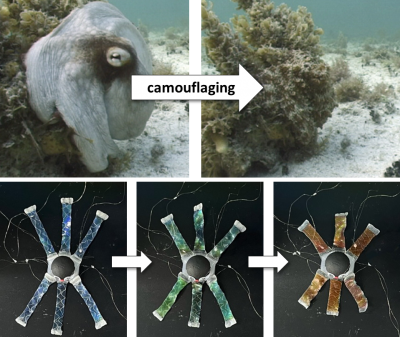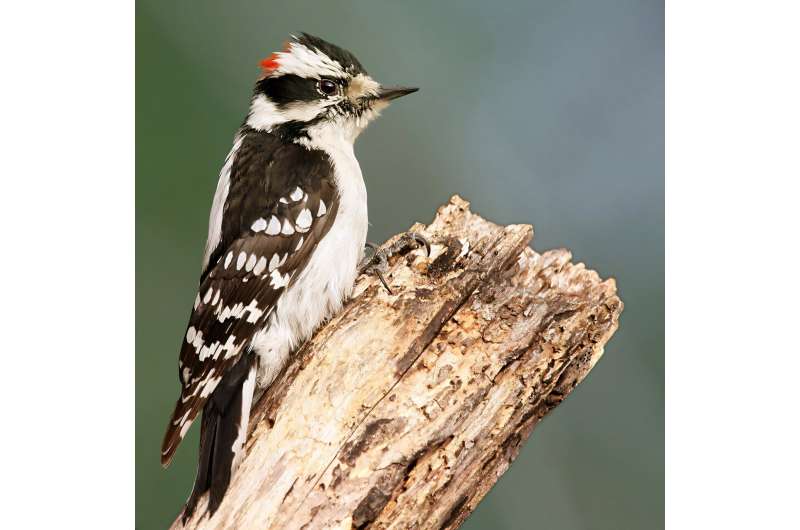Research published in the Journal of Experimental Biology reveals that woodpeckers utilize remarkable physical techniques to enhance their drilling power. A team of scientists, including researchers from Brown University and the University of Münster, discovered that these birds brace their bodies and synchronize their breathing to deliver powerful strikes against trees.
To investigate the mechanics behind woodpecker drilling, the research team captured eight wild downy woodpeckers and filmed them using high-speed cameras over a period of three days. They closely monitored the birds as they drilled into hardwood, measuring muscle contractions and analyzing their breathing patterns. This thorough examination allowed the researchers to understand how the birds transform their bodies into effective tools for drilling.
The study identified that woodpeckers brace their head, neck, abdomen, and tail muscles to stabilize their bodies during impacts. According to lead researcher Nicholas Antonson, the hip flexor and front neck muscles are essential for propelling the birds forward as they strike wood. The birds also engage muscles at the base of the skull and back of the neck to maintain stability.
In addition to muscular coordination, the researchers observed that woodpeckers exhale forcefully at the moment of impact, similar to a tennis player grunting during a powerful shot. This breathing technique enhances core stability and allows for greater control over each strike. The birds fine-tune their impacts based on the hardness of the wood; they deliver stronger strikes when drilling and softer taps when communicating with others.
The team’s findings also revealed that woodpeckers can strike at rates of up to 13 times per second. They achieve this rapid tapping by taking short inhalations, which occur between each blow. This synchronized breathing is crucial for maximizing the effectiveness of each impact, reinforcing the idea that woodpeckers use their entire bodies in the drilling process.
The implications of this research extend beyond understanding woodpecker behavior. The findings may inspire biomimicry in engineering and robotics, where similar mechanisms could be applied to create more efficient tools and machines.
This study contributes to the broader understanding of avian biomechanics and highlights the intricate ways in which animals adapt their physical characteristics for survival. The collaboration between scientists from different institutions underscores the value of interdisciplinary research in uncovering the complexities of nature.
For further details, the complete study can be accessed in the Journal of Experimental Biology, published on November 6, 2025.





































































